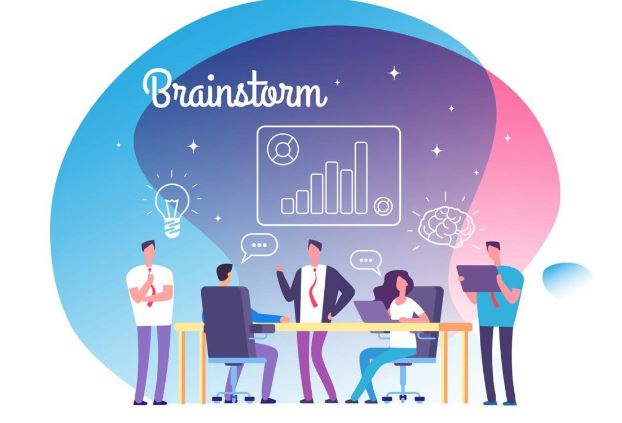Creativity and Effective Electronic Brainstorming (2011)
Creativity and inventiveness are key components of problem solving and investigation, yet despite decades of creativity research, many of the techniques for increasing creative production still compelling theoretical and causal foundations. The purpose of this final year dissertation was to look at the advantages and disadvantages of the original group creative thinking techniques, therefore exploring ways of using advanced electronic and communication technology to improve innovation in organisations. As a result the author has outlined a new electronic brainstorming system called Distributed Brainstorming.
Creativity is the heart of the quest for a sustainable competitive advantage and organisational survival. Without having a creative work force an organisation cannot innovate to improve its performance, nor can it survive significant environmental change. In dynamic competitive environment one has to be able to think of new ideas or ways to advance in an organisation.
As the competition between companies becomes increasingly fierce, these companies must be able to communicate with customers, potential customers and fellow colleagues much more effectively and efficiently. Verbal brainstorming was the technique to achieve this advantage, although now this technique is lacking enthusiasm and becoming less effective. As the breadth and depth of technological power available to the general population has reached unprecedented levels, and is likely to continue to increase. It is time to use the power of technology to take brainstorming to a new level in group creative thinking techniques.
With the scope of the project in mind, the aim of this project was a review of brainstorming, leading to an empirical examination of electronic brainstorming and its main tools, and so generating a framework for the development of a new electronic brainstorming tool.
Dissertation objectives
- Research Creativity and Brainstorming, outlining the problems associated with these
- Research and evaluate Electronic Brainstorming technologies and techniques
- Look at user requirements to improve group creative thinking
- Design an improved application to develop and increase group creative thinking
- Evaluate design with user requirements
- 12,000 words – 72 pages in length
- Excellent use of literature
- Excellent in depth analysis
- Well written throughout
- Includes questionnaire
- Ideal for IT and business students
1 – Definition and Study Scope
Project Definition
Scope of this Project
Aims and Objectives
2 – Literature Review
Analytical and Creative Thinking
What is Verbal Brainstorming?
What is Electronic Brainstorming?
Evaluation of Ideas
3 – Research Methodology
The Questionnaire
Interview
Questionnaire Procedure
Questionnaire Results
Interview Procedure
Interview Results
4 – Design Objectives
Chosen System Development Cycle
Prototyping
Project Objectives
Experience of Systems Development
Design Decisions
Architectural Design of Electronic Brainstorming system
5 – Detailed Design
Design Solutions
What is Object-Orientation?
Application of Object-Orientation using UML
Stage One – Use Case Modelling
Stage Two – Class Diagram
Stage Three – Class Responsibility Collaboration Cards (CRC)
Stage Four – Interaction Sequence Diagram
6 – Evaluation
Observational Evaluation
Results of Evaluation
7 – Project Conclusion
Conclusion
Appendix Section

